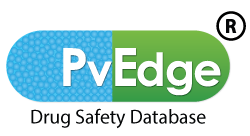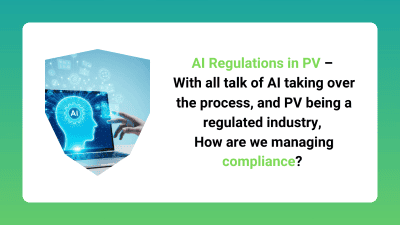Understanding the Shift Towards AI Regulations in PV
Artificial intelligence (AI) is reshaping pharmacovigilance (PV) — from case processing and signal detection to literature screening and data analysis. Yet, as these digital systems become more embedded, regulators worldwide are setting new standards to ensure that innovation does not compromise compliance. The growing discussion around AI regulations in PV is a clear reflection of the need to balance technological advancement with patient safety and ethical responsibility.
Why AI Regulations in PV Are Becoming Essential
Pharmacovigilance operates within a tightly controlled regulatory framework, governed by authorities such as the EMA, FDA, MHRA, and ICH. These frameworks were designed for traditional systems where human oversight dominated every step of the safety monitoring process.
However, the rise of automation and predictive analytics has introduced new complexities — from ensuring data quality to managing algorithmic transparency. AI regulations in PV are therefore essential to guarantee that AI-based tools operate within defined ethical and procedural boundaries, maintaining accountability while driving operational efficiency.
AI Regulations in PV and the Compliance Imperative
AI can process large volumes of safety data faster than traditional methods — but speed must not come at the expense of compliance. Regulators expect that any AI-driven pharmacovigilance activity remains auditable, explainable, and fully traceable.
AI regulations in PV require organisations to validate their systems, document decision logic, and ensure appropriate levels of human oversight. Transparency in how algorithms arrive at conclusions — particularly in adverse event assessment and signal detection — is vital for both regulatory acceptance and industry trust.
Human Oversight as a Core Element of AI Regulations in PV
While AI tools can handle repetitive and data-heavy tasks, they cannot fully replace human expertise. AI regulations in PV reinforce the principle that qualified safety professionals must remain central to case evaluation and decision-making.
Regulatory agencies, including the EMA and MHRA, have consistently highlighted the importance of maintaining a “human-in-the-loop” model — one that combines the efficiency of AI with the critical judgement of experienced PV experts. This ensures that automation enhances, rather than replaces, human accountability.
Validation and Governance under AI Regulations in PV
Validation is another crucial component of AI regulations in PV. Every AI-enabled pharmacovigilance tool must be rigorously tested to confirm reliability, accuracy, and consistency with regulatory requirements.
This includes ongoing monitoring of algorithm performance, maintaining version control, and documenting changes that could affect safety data interpretation. Establishing governance frameworks around AI use — including ethical considerations and risk mitigation strategies — helps ensure that pharmacovigilance systems remain inspection-ready and regulator-compliant.
Global and Ethical Dimensions of AI Regulations in PV
Across the globe, regulatory agencies are moving toward unified approaches for AI oversight. The EU AI Act, FDA’s AI/ML Action Plan, and the MHRA’s guidance on AI in medical software collectively set expectations for transparency, risk categorisation, and data protection.
Ethically, AI regulations in PV demand that AI systems respect privacy laws such as GDPR, avoid bias, and maintain fairness in data analysis. These standards ensure that the use of AI in pharmacovigilance continues to protect patients and promote responsible technological growth.
The Future Landscape of Compliance and AI Regulations in PV
The next phase of pharmacovigilance will see AI integrated into nearly every safety process — from real-time monitoring to predictive analytics. As this happens, compliance will evolve to focus on continuous model validation, real-time governance, and adaptive learning oversight.
Forward-thinking organisations that embed compliance into their AI adoption strategies today will be better prepared for tomorrow’s regulatory expectations. AI regulations in PV will no longer be viewed as limitations, but as enablers of safe, transparent, and intelligent pharmacovigilance operations.
Conclusion: Driving Responsible Innovation with PvEdge®
The future of pharmacovigilance is undeniably intelligent — and responsibly so. As global agencies continue refining AI regulations in PV, pharmaceutical organisations need solutions that combine automation with compliance, innovation with integrity.
Sarjen Systems’ PvEdge® is an advanced AI-infused pharmacovigilance software solution that empowers drug safety teams to work smarter, faster, and more accurately. From intelligent case processing and automated signal detection to streamlined reporting, PvEdge® helps organisations confidently embrace digital pharmacovigilance while staying aligned with evolving global regulatory expectations.
With PvEdge®, compliance meets innovation — ensuring every safety decision is data-driven, transparent, and future-ready.



